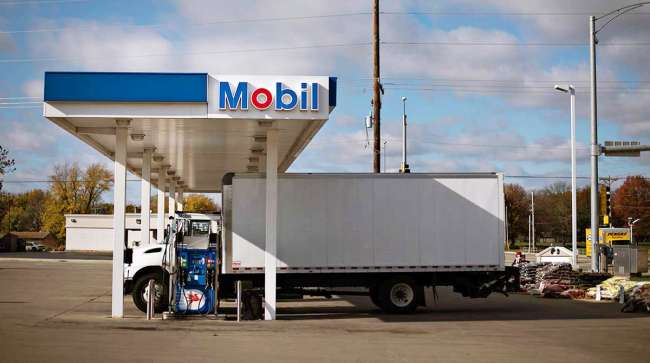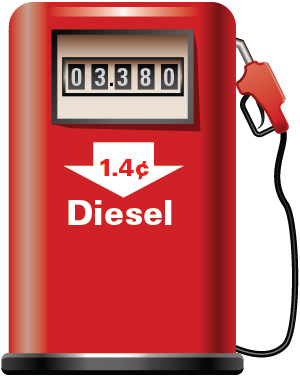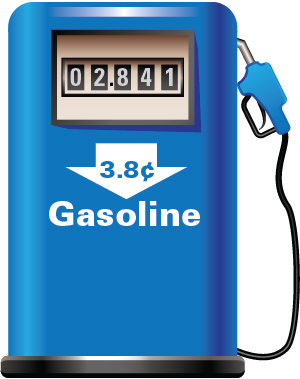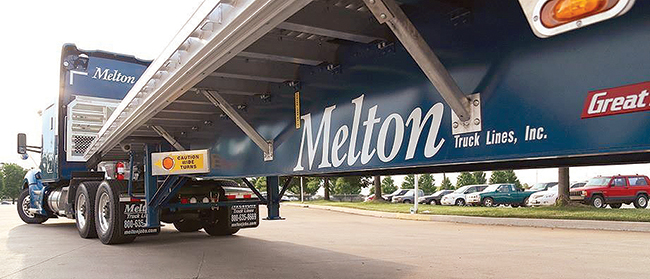Senior Reporter
Diesel Slides 1.4¢ in First Decline Since Aug. 20

The U.S. average retail price of diesel dropped 1.4 cents to $3.380 a gallon as crude oil prices fell and U.S. inventories expanded.
It marked the first decline in the price of diesel since Aug. 20.
Trucking’s main fuel costs 58.3 cents a gallon more than it did a year ago, when the price was $2.797, the Department of Energy said Oct. 22.
The national average price for regular gasoline fell 3.8 cents to $2.841 a gallon, DOE’s Energy Information Administration said. The average is 36.2 cents higher than it was a year ago.
Total products supplied for distillate fuel oil — an indication of demand for primarily ultra-low-sulfur diesel used in transportation and to a lesser degree as heating oil — for the week ending Oct. 19 totaled 4.07 million barrels a day compared with 4.14 million a week earlier. Demand was up 7% from the same period last year.

“We think basically that we are facing the tightest diesel market we have seen in some time,” Phil Flynn, senior energy analyst at The Price Futures Group, told Transport Topics.
He pointed to new demand from ships for ultra-low-sulfur diesel under maritime rules set to take effect Jan. 1, 2020.
More immediately, there still is time for the weather to turn cold and refineries are in maintenance season, both of which have held down diesel prices, he added.
Meanwhile, the market is fearful about the midterm elections and the economy if Democrats gain seats in Congress, and traders are holding off buying, he said. “The sellers have been able to wrest control from the bulls for the past several weeks.”
One truckload fleet executive said he relied on new Class 8 trucks and certain components for continual improvements in average miles per gallon.
New trucks the carrier bought in 2017 were more fuel efficient than those bought in 2016, and 2018 trucks are the most fuel efficient yet, said Brian Matthews, vice president of operations at truckload carrier American Central Transport Inc.

“We are primarily concerned with spec’ing our equipment. We hope the 2019s we are buying now will do better just straight out of the gate,” he said.
Kansas City, Mo.-based American Central Transport buys 1.1 million gallons of fuel a quarter and operates 300 trucks.
The latest features added on to boost fuel mileage are predictive cruise control and a tire pressure monitoring system for the tractor — its trailers already use a self-inflating system.
“It does increase the cost of the truck but gives us that mpg improvement we are looking for,” Matthews said. “We are going to keep investing in different technologies.”
The carrier also has a quarterly fuel bonus reward program for the top 25% of its drivers, who can earn up to $500 as an incentive to maximize mpg. “It has been a success,” Matthews said.
Another carrier executive also was watching fuel prices closely.
“We have noticed obviously an increased spend on fuel,” Melton Truck Lines Inc. Chief Financial Officer Robert Ragan said.

TT File Photo
“The way we look at fuel is that there are three different components. One is how well you buy it, your negotiated discounts. Another is our mpg, and we have to do everything we can to conserve fuel, whether it’s fuel bonuses for the drivers, auxiliary power units or automatic transmissions. That’s our obligation to our customers — to have the best mpg possible,” Ragan said.
The last component in managing fuel is the surcharge, he said. “Our net cost per mile after surcharges, when you put those three buckets together, is up slightly but not significantly,” he said.
The Tulsa, Okla.-based flatbed carrier runs 1,220 trucks, and its gross spend on diesel year to date through September is about $43 million, Ragan said.
Melton Truck Lines ranks No. 92 on the Transport Topics Top 100 list of the largest for-hire trucking companies in North America.
West Texas Intermediate crude futures on the New York Mercantile Exchange closed at $66.82 per barrel Oct. 24 compared with $71.78 on Oct. 15.
Also Oct. 24, EIA reported U.S. commercial crude oil inventories rose by 6.3 million barrels from the previous week. That marked the longest streak of weekly increases since March 2017, according to Bloomberg News.
At 422.8 million barrels, U.S. crude oil inventories are about 2% above the five-year average for this time of year.




